FRTR at 30 Years: A Retrospective of Applied Innovative Technologies for Successful Site Remediation
Sponsored by: Federal Remediation Technologies Roundtable (FRTR)
Archived: Wednesday, November 18, 2020
FRTR at 30 Years: A Retrospective of Applied Innovative Technologies for Successful Site Remediation
2020-11-18
Federal Remediation Technologies Roundtable (FRTR)
The Fall 2020 Meeting of the Federal Remediation Technologies Roundtable (FRTR) will be held as a webinar session on Thursday, Nov. 18, 2020. As always, FRTR meetings are open to the public.
FRTR's objectives for this meeting are to:
- Provide a retrospective on 30 years of interagency collaboration, technology transfer and advocacy by FRTR to advance technology innovation for site remediation.
- Highlight current FRTR initiatives in technology transfer and applied innovative technology that are contributing to successful site remediation.
Agenda:
- 1:00 - 1:10
- Welcome, Meeting Objectives and Agenda
Kent Glover, AFCEC, FRTR Steering Committee Chair - 1:10 - 1:40
- FRTR Retrospective: The Benefit of FRTR to Agency Missions
Dan Powell, U.S. EPA - 1:40 - 2:10
- Updates to the FRTR Website: Technology Matrix and Modeling Guidance
Michael Adam, U.S. EPA and Thomas Nicholson, U.S. NRC - 2:10 - 2:45
- MARSSIM Survey Manual Revision 2 Update, New Survey Approaches, Issues, and Advanced Technologies for Radiological Characterization and Survey
Boby Abu-Eid with Thomas Nicholson, Mark Fuhrmann and Cynthia Barr, U.S. NRC and Kathryn Snead, U.S. EPA - 2:45 - 3:15
- Agency Announcements
Kent Glover, AFCEC, FRTR Steering Committee Chair - 3:15 - 3:30
- Where Does FRTR Go From Here?
An invitation to identify federal agency priorities for upcoming FRTR initiatives
Kent Glover, AFCEC, FRTR Steering Committee Chair - 3:30 - 3:30
- Adjourn
Accessibility, Recording, and Content Disclaimer
Rehabilitation Act Notice for Reasonable Accommodation
It is EPA's policy to make reasonable accommodation to persons with disabilities wishing to participate in the agency's programs and activities, pursuant to the Rehabilitation Act of 1973, 29 U.S.C. 791. Any request for accommodation should be made to Cindy Frickle at 703-603-8763 or frickle.cynthia@epa.gov, preferably one week or more in advance of the webinar, so that EPA will have sufficient time to process the request. EPA would welcome specific recommendations from requestors specifying the nature or type of accommodation needed. Please note that CLU-IN provides both alternate phone call-in options and closed captioning for all webinars, and requests for these specific accommodations are not necessary.
Webinar Recording
By participating in this CLU-IN webinar, you automatically agree to authorize recording of audio and visual content presented during this live event and consent to subsequent use of this recording in the public domain by the U.S. Environmental Protection Agency. This recording may include questions, comments and poll responses provided by you during the live event in addition to your name, voice, image or likeness. This recording will be made available after the conclusion of the live event as part of the CLU-IN webinar archives, and will remain available indefinitely. If you do not wish to consent to the recording, please do not join the live event, and contact Jean Balent at 202-566-0832 or balent.jean@epa.gov to discuss your concerns.
Content Disclaimer
This webinar is intended solely to provide information to the public. The views and opinions expressed as part of this webinar do not necessarily state or reflect those of the U.S. Environmental Protection Agency. It is not intended, nor can it be relied upon, to create any rights enforceable by any party in litigation with the United States, or to endorse the use of products or services provided by specific vendors. With respect to this webinar, neither the United States Government nor any of their employees, makes any warranty, express or implied, including the warranties of merchantability and fitness for a particular purpose, or assumes any legal liability or responsibility for the accuracy, completeness, or usefulness of any information, apparatus, product, or process disclosed, or represents that its use would not infringe privately owned rights.
Presenters:
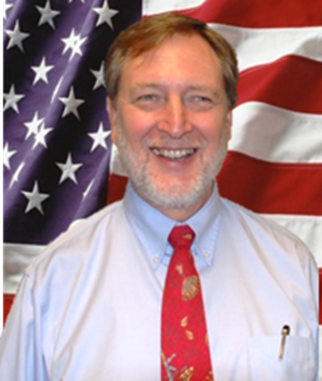 Kent Glover, Ph.D., U.S. Air Force Civil Engineer Center (AFCEC) (kent.glover@us.af.mil)
Kent Glover, Ph.D., U.S. Air Force Civil Engineer Center (AFCEC) (kent.glover@us.af.mil)
Dr. Glover has been involved in groundwater and vadose zone remediation since the early 1980s. Currently, he is the Air Force Subject Matter Expert (SME) for Remediation Systems and provides technical leadership in remedy selection, implementation, performance evaluation and optimization. He also provides expertise in numerical modeling of contaminant fate and transport, and remediation of non-aqueous phase liquids. Before coming to the Air Force in 2010, he was a Principal Scientist for several engineering firms providing consulting services to private sector and governmental clients. From 1976 until 1989, he served in the U.S. Geological Survey as a hydrologist for groundwater contamination and water resources projects across the western United States. He holds a Ph.D. and M.S. in Environmental Science and Engineering from Colorado School of Mines and a B.S. in Watershed Science from Colorado State University.
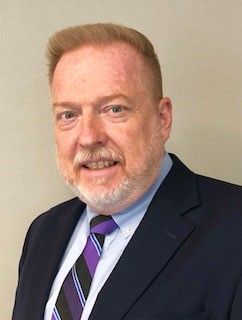 Dan Powell, U.S. EPA (powell.dan@epa.gov or 703-603-7196)
Dan Powell, U.S. EPA (powell.dan@epa.gov or 703-603-7196)
Dan Powell leads efforts to promote awareness and use of best practices and innovative technologies for site clean-up at hazardous waste sites across EPA's waste programs. He manages education, technology support, and information programs to support site project managers within EPA, States and at the local level through a coordinated program of information development and dissemination, training, and direct site support. Among the key initiatives Dan is currently leading or supporting are efforts to:
- Develop a National strategy and implement green remediation principles in the Superfund program,
- Develop a National strategy and advance innovative and state-of the practices techniques to optimize site clean-up processes from characterization through remediation,
- Advocate sampling and analytical strategies to improve the understanding of site conditions and improve remedy performance, and
- Continually improve the delivery of information and education to hazardous waste site clean-up professionals inside and outside of EPA.
For over 20 years, Dan has developed waste site cleanup information resources for both technical and non-technical audiences, and managed a number of projects to support the application of the innovative and streamlined approaches for investigation and remediation at a variety of hazardous waste cleanup and reuse sites. Dan has been with the Technology Innovation Program, now part of the Office of Superfund Remediation and Technology Innovation, since 1990. Dan came to the Agency in 1988 as a Presidential Management Intern with the Headquarters waste programs office (Office of Solid Waste and Emergency Response) and has worked in the program budget and information management offices; the Office of Underground Storage Tanks; the Region 4 Superfund Program; and the Congressional Office of Rep. Michael Bilirakis (FL). Prior to coming to EPA, Dan worked on the investment portfolio of a large Regional bank, analyzing and trading, among other instruments, municipal bonds, Federal Funds, and government-backed securities.
Dan received his Masters of Public Administration from the Woodrow Wilson School of Government at the University of Virginia in 1988, and he graduated summa cum laude with his Bachelor of Arts degree in both political science and urban studies from Roanoke College (Salem, VA) in 1985.
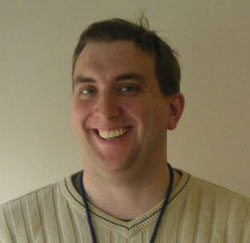 Michael Adam, U.S. EPA Technology Innovation and Field Services Division (adam.michael@epa.gov or 703-603-9915)
Michael Adam, U.S. EPA Technology Innovation and Field Services Division (adam.michael@epa.gov or 703-603-9915)
As a Triad advocate, Mike directed the final production of the Management and Interpretation of Data Under a Triad Approach. For the Technology Innovation Program (TIP), Mike serves as POC for various issues and initiatives such as Vapor Intrusion, Decision Support Tools, and the Measurement and Monitoring Technologies for the 21st Century initiative; and is part of the CLUIN management team. Mike has graduate degrees in Plant Physiology (2000, Iowa State) and Environmental Engineering (2003, Nebraska-Lincoln), and was a staff Research Assistant in Environmental Soil Science at Nebraska-Lincoln before joining the Technology Innovation Program at the EPA in late 2004.
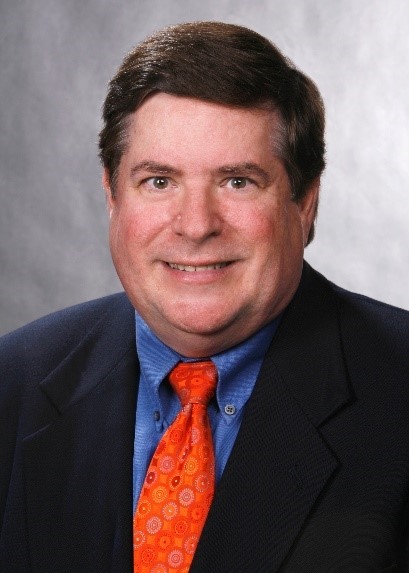 Thomas Nicholson, Senior Technical Advisor for Radionuclide Transport in the Environment, Division of Risk Analysis, Office of Nuclear Regulatory Research (RES), U.S. Nuclear Regulatory Commission (thomas.nicholson@nrc.gov or 301-415-2471)
Thomas Nicholson, Senior Technical Advisor for Radionuclide Transport in the Environment, Division of Risk Analysis, Office of Nuclear Regulatory Research (RES), U.S. Nuclear Regulatory Commission (thomas.nicholson@nrc.gov or 301-415-2471)
Tom has worked at the NRC for 44 years, primarily in research. His principal responsibility is to provide technical advice to NRC senior management concerning radionuclide migration in the subsurface at NRC-licensed facilities. His work focuses on research in radionuclide transport at nuclear facilities primarily due to abnormal, accidental releases to the subsurface. He is a registered Professional Geologist and a certified Professional Hydrogeologist with the American Institute of Hydrology. He is a member of the Federal Remediation Technologies Roundtable Steering Committee.
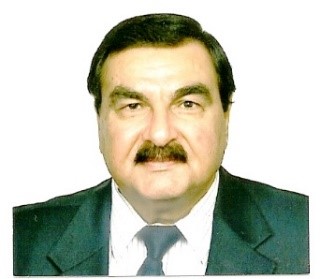 Boby Abu-Eid, Division of Decommissioning, Uranium Recovery, and Waste Programs, Office of Nuclear Material Safety and Safeguards, U.S. Nuclear Regulatory Commission (boby.abu-eid@nrc.gov or 301-415-5811)
Boby Abu-Eid, Division of Decommissioning, Uranium Recovery, and Waste Programs, Office of Nuclear Material Safety and Safeguards, U.S. Nuclear Regulatory Commission (boby.abu-eid@nrc.gov or 301-415-5811)
Dr. Eid is a Senior Level (SLS) Advisor at the US NRC. He provides high level advice on technical and policy issues involving decommissioning, uranium recovery, low-level waste, and environmental protection. He is a member of the Multi-Agency Radiation Survey and Site Investigation Manual (MARSSIM) workgroup and NRC's lead representative on Multi-Agency Radiological Laboratory Analytical Protocols (MARLAP). Before joining the NRC, Dr. Eid conducted research and/or taught at: MIT, University of Bonn, Kuwait Institute for Scientific Research, and Carnegie Institution of Washington. In his present position, Dr. Eid's key activities involve technical/policy analysis; risk analysis and safety reviews, development of models/codes for decommissioning and waste management, new technology developments, and development of multi-agency guidance and protocols. He was a key contributor to assessment and development of NRC regulations and guidance for cleanup and decommissioning for license termination and site release. He holds a Ph.D. from MIT. He is a recipient of NRC's meritorious service award and on the advisory board of national and international conferences.
Moderators:
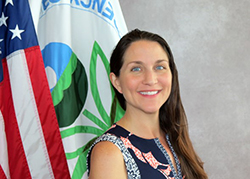 Jean Balent, U.S. EPA Technology Innovation and Field Services Division (balent.jean@epa.gov or 202-566-0832)
Jean Balent, U.S. EPA Technology Innovation and Field Services Division (balent.jean@epa.gov or 202-566-0832)
Ms Balent is on the staff of the EPA's Technology Innovation and Field Services Division where she has worked to collect and disseminate hazardous waste remediation and characterization information since 2003. Ms Balent manages the Clean Up Information Network website and actively supports online communication and collaboration resources available to EPA. She formerly worked with the US Army Corps of Engineers Environmental Engineering Division in the Buffalo District. Ms Balent was also a member of the SUNY-Buffalo Groundwater Research Group where she constructed and tested large scale models of groundwater flow. Ms Balent has also conducted research relating to the Great Lakes, environmental remediation, and brownfields re-development. She holds a Bachelor's degree in environmental engineering from SUNY-Buffalo and a Master's degree in Information Technology from AIU.
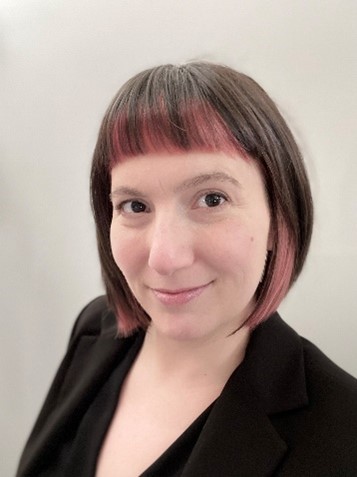 Cindy Frickle, U.S. EPA Office of Superfund Remediation and Technology Innovation (frickle.cynthia@epa.gov or 202-566-0927)
Cindy Frickle, U.S. EPA Office of Superfund Remediation and Technology Innovation (frickle.cynthia@epa.gov or 202-566-0927)
Cindy Frickle is a physical scientist with EPA's Superfund program where she reviews and propagates technical information to site cleanup professionals through Clu-In, EPA forums, and interagency channels. Prior to joining EPA, she spent time characterizing contaminated sites, coring sediments, studying microbes, and teaching. She completed her Biogeology MS and Geology BS in the University of Minnesota's School of Earth Sciences.
Webinar Slides and References:
-
 Slide Presentation for Kent Glover; FRTR Steering Committee Chair; AFCEC (155KB/PDF)
Slide Presentation for Kent Glover; FRTR Steering Committee Chair; AFCEC (155KB/PDF)
-
 Slide Presentation for Dan Powell; U.S. EPA (320KB/PDF)
Slide Presentation for Dan Powell; U.S. EPA (320KB/PDF)
-
 Slide Presentation for Michael Adam; U.S. EPA (1.62MB/PDF)
Slide Presentation for Michael Adam; U.S. EPA (1.62MB/PDF)
-
 Slide Presentation for Thomas Nicholson; U.S. NRC (163KB/PDF)
Slide Presentation for Thomas Nicholson; U.S. NRC (163KB/PDF)
-
 Slide Presentation for Boby Abu-Eid, Thomas Nicholson, Cynthia Barr and Kathryn Snead (1.34MB/PDF)
Slide Presentation for Boby Abu-Eid, Thomas Nicholson, Cynthia Barr and Kathryn Snead (1.34MB/PDF)
-
 Slide Presentation for Kent Glover; FRTR Steering Committee Chair; AFCEC.pdf (273KB/PDF)
Slide Presentation for Kent Glover; FRTR Steering Committee Chair; AFCEC.pdf (273KB/PDF)
-
 Slide Presentation for Kent Glover; FRTR Steering Committee Chair; AFCEC.pdf (705KB/PDF)
Slide Presentation for Kent Glover; FRTR Steering Committee Chair; AFCEC.pdf (705KB/PDF)
Webinar Slides and References:
-
 Slide Presentation for Kent Glover; FRTR Steering Committee Chair; AFCEC (155KB/PDF)
Slide Presentation for Kent Glover; FRTR Steering Committee Chair; AFCEC (155KB/PDF)
-
 Slide Presentation for Dan Powell; U.S. EPA (320KB/PDF)
Slide Presentation for Dan Powell; U.S. EPA (320KB/PDF)
-
 Slide Presentation for Michael Adam; U.S. EPA (1.62MB/PDF)
Slide Presentation for Michael Adam; U.S. EPA (1.62MB/PDF)
-
 Slide Presentation for Thomas Nicholson; U.S. NRC (163KB/PDF)
Slide Presentation for Thomas Nicholson; U.S. NRC (163KB/PDF)
-
 Slide Presentation for Boby Abu-Eid, Thomas Nicholson, Cynthia Barr and Kathryn Snead (1.34MB/PDF)
Slide Presentation for Boby Abu-Eid, Thomas Nicholson, Cynthia Barr and Kathryn Snead (1.34MB/PDF)
-
 Slide Presentation for Kent Glover; FRTR Steering Committee Chair; AFCEC.pdf (273KB/PDF)
Slide Presentation for Kent Glover; FRTR Steering Committee Chair; AFCEC.pdf (273KB/PDF)
-
 Slide Presentation for Kent Glover; FRTR Steering Committee Chair; AFCEC.pdf (705KB/PDF)
Slide Presentation for Kent Glover; FRTR Steering Committee Chair; AFCEC.pdf (705KB/PDF)
Additional Resources:
If you have a suggested topic or idea for a future CLU-IN internet seminar, please contact:
Technology Integration and Information Branch
PH: 202-566-0832 | Email: balent.jean@epa.gov
Technology Integration and Information Branch
PH: 202-566-0875 | Email: adam.michael@epa.gov





